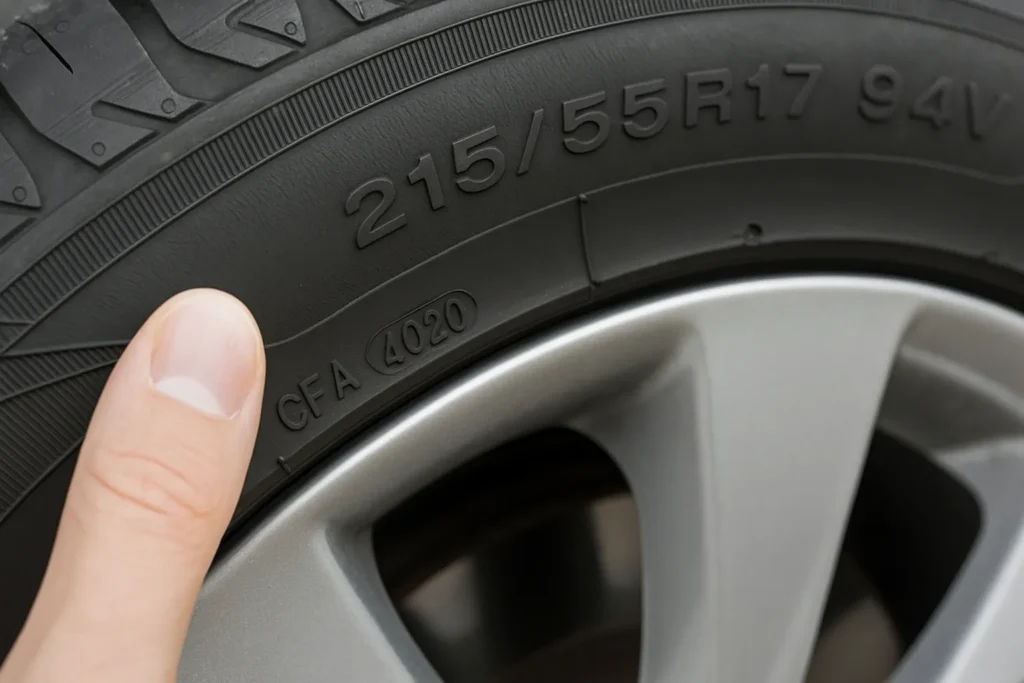Tyres are the unsung heroes of your vehicle. They don’t just keep your ride smooth—they’re a major part of your safety on the road. But here’s a question many people don’t ask: How old are your tyres? Even if the treads look fine, an old tyre can be risky. That’s where knowing how to check tyre manufacturing date becomes essential. Whether you’re buying a new set or just being cautious with your current ones, this guide will walk you through it step by step in the simplest way possible.
Why Tyre Manufacturing Date Matters
Your tyre might look fine, but age can quietly reduce its safety. The rubber in tyres ages with time, even if you don’t drive much. After a few years, it becomes harder and more prone to cracks. This is especially true in India’s climate, where heat and humidity speed up tyre ageing. That’s why manufacturers, tyre experts, and safety bodies recommend checking the manufacturing date before purchase and regularly after installation. Most tyres should be replaced within 5-6 years, no matter how good they look.
Where to Find the Tyre Manufacturing Date
The key is hidden in plain sight, right on the tyre sidewall. Look at the side of your tyre. You’ll notice a bunch of letters and numbers. Somewhere in that mess is a code known as the DOT code (Department of Transportation). It’s usually written like this:
DOT XD AC 1M 2519
The important part for us is the last four digits: 2519
Here’s how to break it down:
- 25 is the week number (so, 25th week of the year)
- 19 is the year (so, the year 2019)
This means the tyre was manufactured in the 25th week of 2019, which is around mid-June.
How to Check the Tyre Manufacturing Date on Your Vehicle
Not all tyres are easily readable, so here’s a simple step-by-step. Sometimes, the DOT code is on the inside of the tyre, not the outside. That means you’ll need to peek behind the tyre or ask a mechanic for help. Here’s what you can do:
- Park in good lighting: Natural light or a flashlight will help you spot the code.
- Look at the sidewall: Scan the tyre’s edge for the word “DOT.” The full code will follow.
- Ignore the letters: Focus on the last four digits—they reveal the manufacturing date.
- Use a mirror (if needed): If the code is on the inner wall, a mirror can help you read it without jacking up the car.
- Take a photo: Sometimes snapping a picture makes it easier to zoom in and read the small digits.
If you’re buying new tyres, always ask the dealer to show you this code before fitting them. You deserve a fresh set, not ones that have been sitting in a warehouse for years.
Understanding Tyre Expiry and Safety Risks
Even if a tyre looks new, an old manufacturing date could spell trouble. Once you’ve figured out how to check the tyre manufacturing date, the next step is to understand what it means. Here’s a quick rule of thumb:
| Tyre Age (From Manufacturing Date) | What It Means |
|---|---|
| 0–3 Years | Safe to use; considered new |
| 4–5 Years | Still okay, but keep an eye on performance |
| 6+ Years | Time to replace—even if not worn out |
Tyres older than six years become stiff, and their grip reduces significantly, especially on wet or uneven roads. So, checking your tyres’ age isn’t just about curiosity—it’s about staying safe.
How Tyre Dealers Might Mislead You
Yes, it happens. Here’s how to be a smarter buyer. Unfortunately, some dealers try to pass off older stock as new. Since most customers don’t know how to check the tyre manufacturing date, they get away with it. If you ever see a tyre with a manufacturing code older than 6 months, ask for a newer one. Insist on checking the DOT code yourself. If they resist or try to distract you, it’s a red flag. You’re spending your money, so don’t feel bad about being cautious. A few seconds of inspection can save you months of worry.
What If the DOT Code Is Missing or Smudged?
No code = No go. Here’s what to do if you can’t find it. In rare cases, you might not see a DOT code at all. It could be:
- On the inner side of the tyre
- Smudged or faded over time
- Missing on non-regulated brands
If you’re unsure, take the tyre to a reputed service centre or mechanic. They usually have experience locating or decoding tricky markings. But remember, if the code is unreadable, it’s better not to take chances. A tyre without a clear manufacturing date shouldn’t be trusted.
When to Replace Tyres Based on Date
Tread depth isn’t everything, age matters too. Even if your tyre still has deep treads, it might not be safe if it’s too old. Here’s when you should consider replacing your tyres:
- After 6 years even if unused
- After 40,000–50,000 km depending on the usage
- If you see cracks, bulges, or uneven wear
- If the ride feels bumpy or slippery despite proper air pressure
By regularly checking the tyre manufacturing date, you can plan ahead and avoid sudden breakdowns or accidents.
Final Thoughts:
Learning how to check tyre manufacturing date may seem like a tiny detail, but it can literally save your life. Tyres aren’t just rubber circles—they’re the contact point between you and the road. Whether you’re buying new ones or checking existing ones, always inspect the date before trusting them on a long journey. And if you love exploring such “how-to” guides that answer everyday questions, you’ll find NutBolt India super handy. It’s packed with practical answers to the kind of things we all wonder about, but rarely ask.













